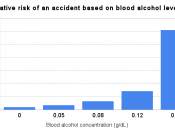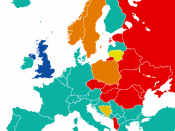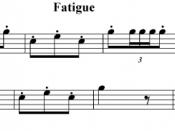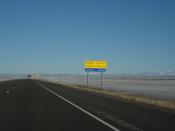Drink driving can be defined as the act of operating a motor vehicle after having consumed alcohol (ethanol) or other drugs. Not only is it very dangerous, but it is illegal too. Just because youÃÂve had a drink or two and arenÃÂt drunk, doesnÃÂt mean that you arenÃÂt affected or will soon be affected by alcohol. Alcohol, being a depressant, does many things to the body such as slowing the brain down, reducing judgment ability, greater confidence causing you to take larger risks, makes it harder to multi-task and also makes you fatigued.
NSW state laws have certain limits on the BAC (Blood Alcohol Concentration). For learner drivers, provisional 1 drivers and provisional 2 drivers, a zero BAC limit applies. Drivers of vehicles with dangerous goods, drivers of public vehicles and drivers of vehicles over 13.9 tonnes, a 0.02 BAC limit applies. A BAC of 0.05 is applied to all other licences not subject to 0.02
or zero.
There are many risks, which are put into perspective when you drink and drive. The main risk being: Will you get home safely tonight? Because alcohol affects you ability to multitask, motorcycle riders are at an even greater risk of tipping over on the vehicle. Another risk is if you have passengers, will they be safe with you? Most times yes but if you do happen to crash into a tree or an oncoming car, there may be consequences. There is also the risk of wether or not the police will catch you whilst you are DUI.
Drink driving can cost a huge amount, both financially and emotionally. In Western Australia, road crashes related to drink driving costs the community more than $1 billion each year. On top of this cost, there is also the emotional cost to the families and friends to those involved. Also it may cost a person their life or their career. It may also cost a person their hobby or their sport.
There are many interesting statistics related to drink driving. For example, did you know that:ç18% of fatal crashes in NSW are cause by drink driving?ç90% of all drink drivers in fatal crashes are men?çü of drink drivers in fatal crashes are aged 30-39 years of age?ç30% of crashes related to drink driving occur as the week is coming to an end?Driver FatigueDriver fatigue can be simply explained in two words. Tired driving. It is simply driving whilst you are tired. You will be able to tell if you are tired by noticing and acting early at the signs of yawning, tired/sore eyes, slow reaction speeds, making fewer and larger steering corrections, missing road signs, having difficulty with precision of driving and also having microsleeps. This is a short sleep, which only lasts a couple of seconds.
There are certain laws, which commercial drivers must obey or else they will get punished. These laws state that the drivers must have rest satisfactory breaks and be medically fit if they need to drive over long distances.
Just like drink driving, there are also many risks, which a person takes when they drive while fatigued. These are risks such as crashing, missing an important road sign, driving dangerously and the main one, having a microsleep. If you were to have a microsleep, you could crash into an oncoming car, crash into the back of another car or end up off the road and crash.
The cost of driver fatigue is devastating to both families and relatives but it also costs the government quite a bit too. If a person dies in an accident, the families and friends of that person would be upset but if a person died in a fatigue related accident where the other driver was responsible, the families would be angry. An inquiry led by the Federal Government found that fatigue related accidents cost roughly $3 billion every year.
20% of the total road toll was killed on NSW roads from accidents related to driver fatigue and majority of these were male. 66 percent of crashes on roads 100 km/h + were fatigue related and 37% of all fatigue related crashes were head on collisions.
Bibliographyhttp://www.rta.nsw.gov.au/roadsafety/downloads/2005_04_drinkdrivingbrochure.pdfhttp://www.rta.nsw.gov.au/roadsafety/advertisingcampaigns/drinkdriving_prevention.htmlhttp://www.rta.nsw.gov.au/roadsafety/drinkdriving/accidentstatistics.htmlhttp://www.rta.nsw.gov.au/roadsafety/advertisingcampaigns/driverfatigue.htmlhttp://www.rta.nsw.gov.au/roadsafety/fatigue/index.htmlhttp://www.tacsafety.com.au/jsp/content/NavigationController.do?areaID=12&tierID=1&navID=7334018F&navLink=null&pageID=203http://www.atsb.gov.au/publications/2006/grant_200601.aspxen.wikipedia.org/wiki/Drink_drivinghttp://www.officeofroadsafety.wa.gov.au/pdf/Topics/WorkplaceManual.pdf





